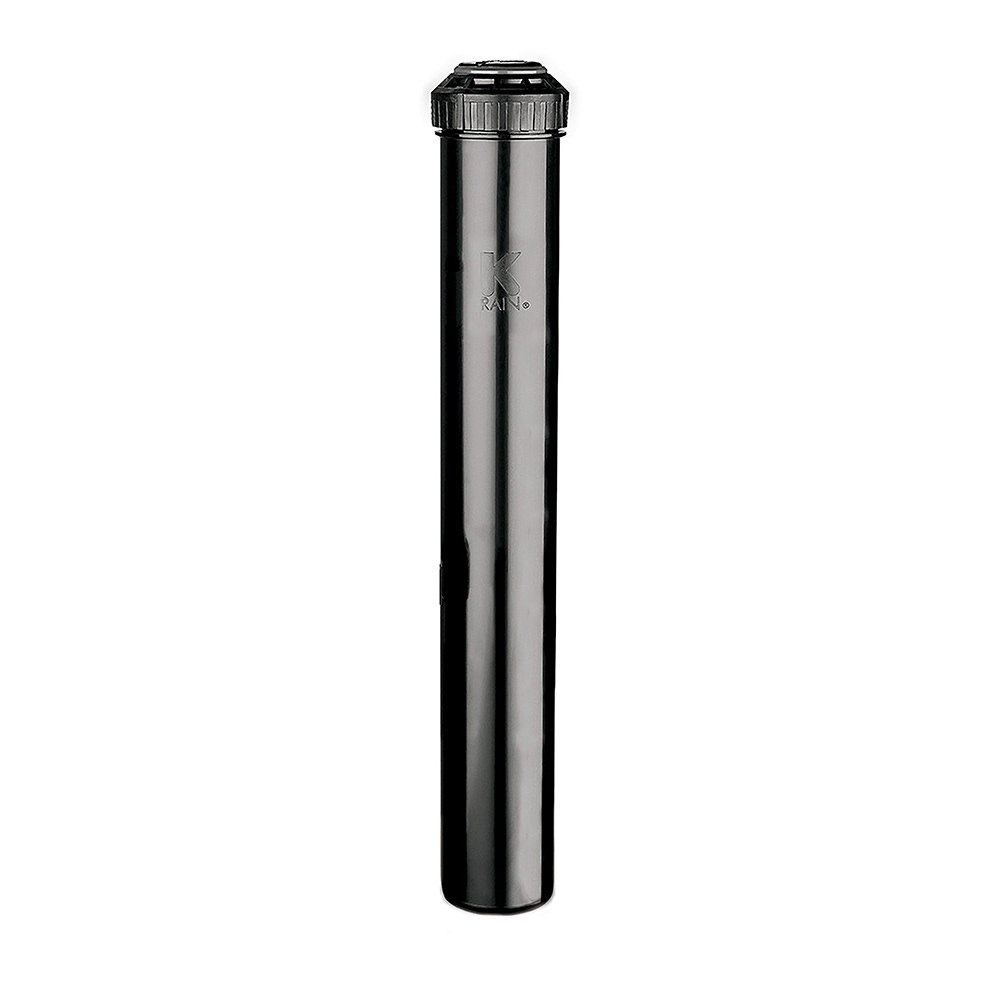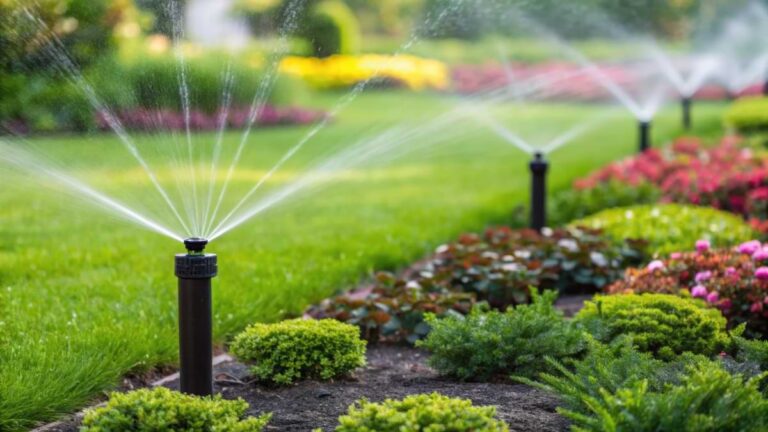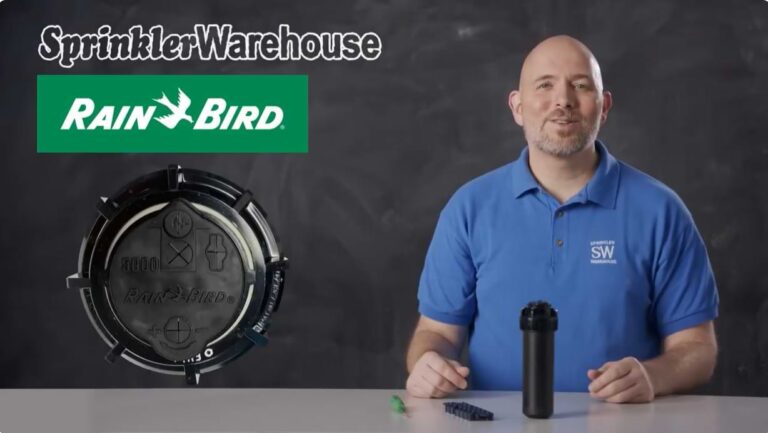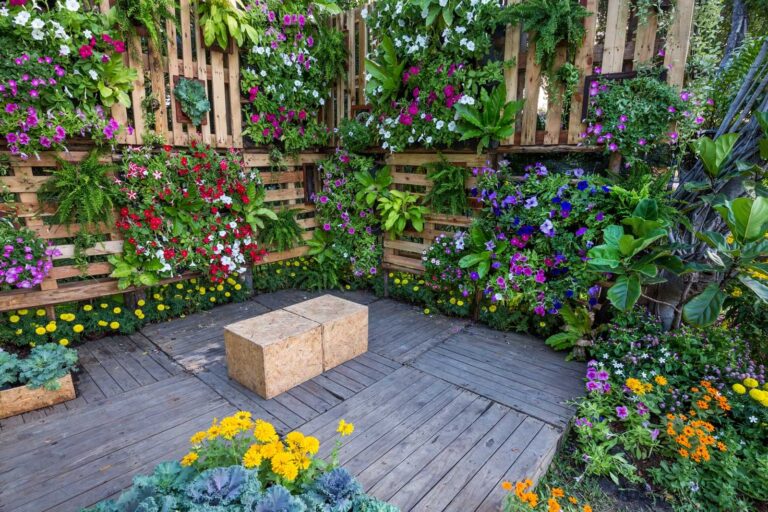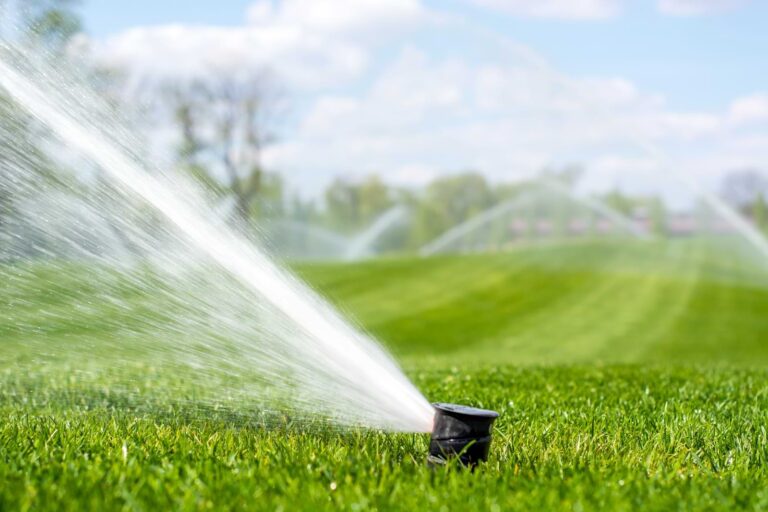Get What’s Right For Your Sprinkler System
This article explains the various types of emitters as well as their functions. Due to the different water needs of flowering plants, it is best to irrigate them using a drip or micro-irrigation system. This irrigation uses individual emitters. The drip method will protect flowering plants by keeping their leaves and flowers dry. However, micro-irrigation is more suitable for sandy or porous soils.
There Are Two Main Types Of Emitters:
- Drip Irrigation- The function of these emitters is that they allow water to drip or seep onto the root zone
- Micro- Sprinkler- The function of these emitters is to direct water into the air much like a miniature sprinkler head.
Both types are installed in the tubing using barbed ends or pushed into the ends of micro tubing. However, drip irrigation lines often come with pre-installed emitters, spaced from 12 – 36 inches along the poly tube.
All emitters act as regulators to control the quantity and rate of water discharge. Emitters have many common characteristics but they will differ in size and shape, as well as the internal design.
Output rates for emitters range from 1/2 to 2 gallons per hour. Those with different output rates can be installed on a single run of tubing. This allows you to compensate for plants with diverse watering needs located in close proximity.
There are also emitters available that offer flow rate options – adjustable from a steady drip to a slow stream of water. Emitters deliver the right amount of water directly to the roots of the plants. However, it is still necessary to choose the correct emitter to fit your needs.
Drip emitters are efficient for separate containers or wide spaces. Emitter hoses are for plants that are close together. There are four main categories of emitters.
Three of these – porous pipe, pre-installed emitter lines, and punch-in emitters – are types of drip irrigation. Micro-irrigation consists of micro-sprinkler heads that can direct water above the root system.
Porous Drip Irrigation Pipe

A porous pipe is referred to as a soaker hose, drip hose, or laser tubing. They are manufactured from porous material or hose which has been drilled with small holes. Both of these allow water to slowly seep through.
A porous drip irrigation pipe is inexpensive. It is also extremely easy to work with. Simply wind the hose through your planting beds and hook it up to an existing water hose or outdoor faucet. The hose is easily adjustable. It can be buried a few inches below the surface for a more permanent installation.
However, the porous pipe is not without its disadvantages. It is not possible to regulate the water pressure within the pipe, and both high areas and locations near the end of the hose will emit less water. Also, due to its basic design, the porous pipe is very susceptible to clogging. This problem can be diminished by using in areas where the mineral content of the water is low and by making use of a fine filter.
Pre-Installed Emitter Drip Irrigation Pipe

Pre-installed emitter lines are just that – polylines manufactured with equally spaced emitters molded into the walls of the pipe. Common sizes are 1/2 and 3/4 inch pipes, with spacing from 12 to 36 inches apart.
They deliver water at rates of 1/2, 1, or 2 gallons per hour. Each rate is suitable for different soil types. Plan to use 2gph emitters in sandy soils, 1gph emitters if your soil is mostly loam, and .5gph emitters in less porous clay soils. Similar to the porous pipe, these emitter lines can be placed on the ground surface and covered with mulch – a very simple installation. A major advantage of porous piping is that its turbulent flow design helps keep them from clogging.
This is used to irrigate vegetable gardens and ground cover beds. It also works well with other mass plantings such as hedges. They are also efficient around trees and shrubs. Pre-installed emitters do not allow for placement flexibility when they are placed at regularly spaced intervals. This is the disadvantage of landscape irrigation.
Punch-In Emitter
The function of punch-in emitters is to allow you to place an emitter anywhere along the length of the pipe by punching a hole and attaching the emitter with an inlet barb. Some emitters even have self-piercing barbs that will make their own hole.
Goof plugs can close a hole if you need to change an emitter’s location during or after installation. Punch-in emitters are available in the usual flow rates of 1/2, 1, and 2gph as well as 4gph. If you are unsure of the requirement for your type of soil, stick with 1gph emitters.
An advantage of punch-in emitters is that they can be replaced with ones having a higher or lower flow rate if your system is not meeting your needs. If an area is still receiving too much water, simply remove a few emitters and plug the holes. Or add additional emitters to sections that are too dry.
Punch-in emitters can be placed in the end section of the tubing. This is useful for container plantings. There are three main types of punch-in emitters, allowing for a wide range of uses.
Drip Emitters
Drip emitters are the most popular since they are able to deliver a slow, steady supply of water that seeps deep into the root system while keeping the surface virtually dry. Although most drip emitters are installed in tubes at ground level, some emitters are designed to attach to stakes and held above ground.
Misters
Misters are in greenhouses and other high humidity applications. Other practical applications include providing a cooling mist in patio areas and watering hanging baskets since the fine mist rarely condenses on leaves.
In-Line Drip Emitters
In-line drip emitters are a cross between drip emitters and a pre-installed emitter line. Outlets can be placed individually anywhere along the length of the poly tube. However, they must be affixed directly to the line, and like emitter lines, water is released through each outlet as it continues on through the line. In-line drip emitters are usually available in 1/2 or 1 gph rates only, made for 1/2 inch tubing, and are most efficient when used to water small plants in short rows.
Micro-Sprinkler Heads
Finally, micro-sprinkler heads, often referred to as low-volume sprayers, represent a type of irrigation system with characteristics of both drip irrigation and sprinkler head systems.
Similar to drip irrigation systems, micro-sprinkler heads operate with low water pressure and use small diameter pipes. However, they deliver water in a fan-like spray in the same manner as traditional sprinkler heads.
They are not as efficient at conservation in comparison to punch-in and in-line emitters. This is because they are prone to losing water from evaporation. Micro-sprinkler heads are more efficient than high-pressure heads when used in standard irrigation systems. They are available in a variety of coverage radii, up to a full circle. An option for Micro-sprinkler heads is to set them to spray in strips. Although they are set on risers, these risers are non-retractable and cannot be used on lawns. Another form of micro-sprinkler heads is micro bubblers, which are popular in shrub beds.
You will find drip irrigation to be an efficient method of irrigation, with efficiency ratings up to 15% higher than a standard irrigation system. With the current push to live “green,” this might be enough to steer you toward a drip irrigation system. However, the simple design requirements, ease of installation, and small financial investment might be the final push to a drip irrigation system destination.






















